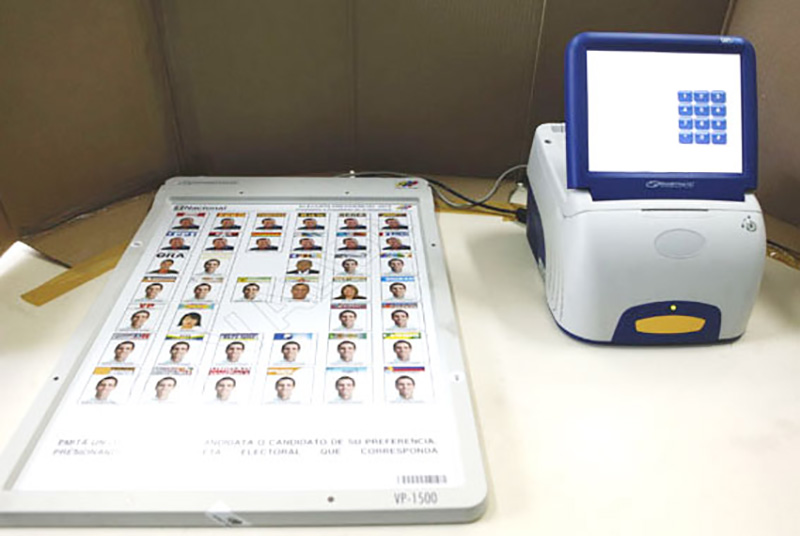Modern technology’s effect on voting
Advancements in technology have already impacted the U.S. voting system, taking it from all paper to electronic ballots. Now that we live in a digital age, how close are we to online voting?
There are currently four ways to vote in a U.S. election: paper ballots in person or by mail, direct recording electronic systems (DRE), ballot marking devices, and punch cards. Various companies have created phone apps and services to make it easy for people to register to vote, but actual voting in national elections cannot be done online.
“Right now, any computer system on the planet can be hacked,” said Holmes Wilson, co-founder and co-director of Fight For The Future (FFTF).
FFTF is responsible for the HelloVote phone app. The goal of the app is to make it easy for people to register to vote via app and text message. Although the company’s objective is to see an increased voter population, Wilson cannot advocate for current technology that allows online voting.
“Hacking can be done by a small number of people, without ever even setting foot in U.S. soil, and no risk of getting caught,” Wilson said.
Wilson uses an example of accusations surrounding Russian state-sponsored hackers who have been suspected of attacking various aspects of the current U.S. election system.
“For something as valuable as control over the U.S. federal government, sky’s the limit to how much time and energy a foreign government might put into hacking the electoral process,” Wilson said.
William J. Kelleher, CEO of The Internet Voting Research and Education Fund, believes that having a reliable voter registration system is the key to preventing voter fraud.
“For online voting, the government can send a code to each voter,” Kelleher said. “The voter logs on to the voting website, and enters his or her name, then the code, then answers a security question. There are numerous false claims about insecurity, but fraudulent registration is the main one.”
In 1974, the first form of electronic voting, the Video Voter, was used in a U.S. government election and, although that method ended in 1980, its successor, the DRE voting machine, is used in many states, and it is the main method used in Texas.
“The problem with these machines is that, to trust them, you had to believe that it was possible to build error-proof, tamper-proof computerized equipment, and as a computer scientist, I know that’s not possible,” said David Dill, professor of computer science and electrical engineering at Stanford University and founder of Verified Voting. “We need to get rid of all paperless DRE’s in the U.S., and have improved auditing laws and procedures everywhere.”
Those who advocate for online voting believe the convenience of voting digitally will increase the voter population, but many express that the possibility of voter fraud and system hacking outweigh the convenience.
“Many of the best computer security specialists and cryptographers in the world have studied how to do secure voting over the Internet, and almost all have concluded that it is not possible to do,” Dill said. “The reason that people want Internet voting is because they want to make voting more convenient, hoping that more people will vote, but in the places it’s been tried, Internet voting has not consistently increased turnout. Efforts to improve the voter registration system would definitely make a difference in some places, and we’ve got to find a way to inform and motivate voters, but deploying technology that makes our elections untrustworthy is definitely not the right solution.”
Technology companies have been working to develop protection software that would make online voting secure. For example, Smartmatic unveiled a new facial recognition system that identifies a person by his or her selfie. The company is behind TIVI, an online voting system, and the Smartmatic company guarantees voter privacy and security when using their voting technology.
“I think that in the age we live in, where just about everything is digital, it would be a benefit to have online voting,” said Steven Cabrera, psychology major. “Because online voting would be easier for people, I feel like a lot more people would actually vote.”
Se Hyoung Yi, assistant professor of political science at UHCL, said that identity theft and hacking would be the real problem to be solved first. Yi said that many European countries tested e-voting, but most have since discontinued it due to complications.
“Estonia, which has used an Internet voting program since 2005, was able to solve this problem through issuing a smart ID card with a user’s photo and an electronic chip in it,” Yi said. “Looking similar to a chip equipped credit card, the ID card stores digitalized data about the person’s name, gender, national identification number and other public key certificates. In Switzerland, voters are authenticated by Short Message Service (SMS) as well.”


Excellent, objective report on the current state of opinion regarding Internet voting in the USA.
Here’s a book review of a new book on the subject: New Book on Internet Voting sez Security doable + nonpartisan http://internetvotingforall.blogspot.com/2016/09/the-great-american-spirit-and-internet.html